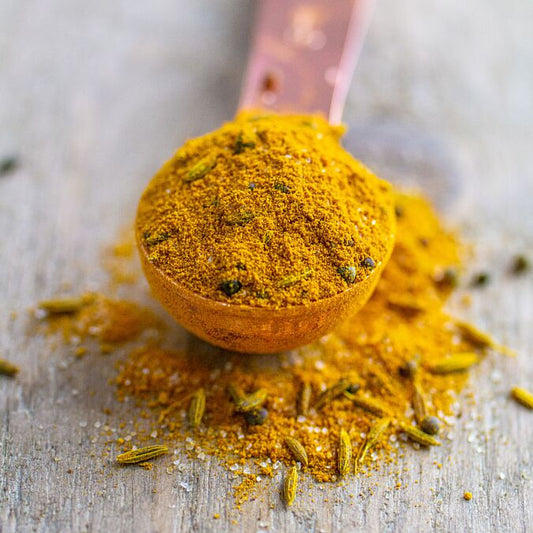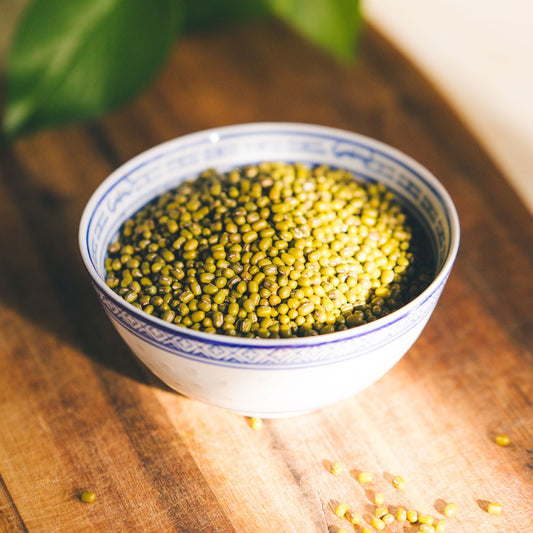Over the past several years, veganism has become a common choice in diet and lifestyle, especially within the health and wellness community. To choose a vegan diet means your menu is void of any animal products, including meat, fish, dairy, and eggs.
When fully adopting a vegan lifestyle, everything you purchase or use is also free from animal ingredients and animal cruelty—no leather bags, shoes, or furniture. Even personal hygiene products and makeup are carefully selected.
Many yogis adopt this practice in conjunction with the ethical observance of ahimsaor non-harming, and in general, both
Still, Ayurveda views every food as having a medicinal benefit, and as such, there may be a time when healing calls for the consumption of an animal product, such as cow's milk or ghee. So, while a vegan diet is not necessarily a traditional Ayurvedic diet, it begs the question, how can the two be merged together?
The answer is “very consciously.”

The Energies and Qualities of a Vegan Diet
In Ayurveda, keeping your constitution balanced will always circle back to the
Typically, this results in an increase in lighter and drier foods, or foods that share characteristics with
Since a vegan diet leans towards being light and dry, it can help to bring balance to
However, it is not well-suited for vata, unless strong efforts are made to account for what may be lacking in heavy and oily qualities.
If you aren't sure of your constitution, the dosha quiz offers a quick way to learn more about your personal doshic makeup.
5 Tips for Staying Balanced with a Vegan Diet
- If you are predominately vata constitution or have a vata imbalance, increase nuts, seeds, avocados, and other healthy plant sources of fats and oils. Soak nuts to make them easier to digest.
Incorporate dishes that have white basmati rice alongside mung beans or lentils into your diet to be sure you're getting complete proteins, and cook with spices such as cumin, coriander, fennel, fresh ginger, and cardamom to aid in digestion.
- For pitta constitutions or those with pitta imbalances, be sure that you're eating enough. Your digestive fire is the strongest of all the
Don't fear grains, as their sweetness is good for balancing pitta. Sprinkle flax, hemp, sunflower, and pumpkin seeds onto your food, but refrain from eating an abundance of nuts. Nuts have a heating energy that can be too much for pitta to handle.
- To the kaphas and those managing kapha imbalances, this is your wheelhouse. A vegan diet will serve you right, so long as you continue to eat whole, fresh foods and avoid those foods that are mimicking meat or other animal products. Those foods can be overly processed, which isn't a good choice for anyone.
- Cook your veggies. Though neither a vegetarian nor vegan eats simply vegetables, they are likely to consume more than someone who is consuming meat. All constitutions will feel best if they favor cooked veggies over raw, as it makes it easier to break down and absorb the nutrients and less likely to interfere with elimination.
- Remember that some things can't be replaced. Making substitutions for therapeutic reasons isn't the same as making a substitution in a recipe. For example, if you're making dinner with a recipe that calls for cow's milk, it's pretty simple to make it vegan by replacing it with almond milk.
Cow's milk and almond milk, however, do not have the same properties. So, if you're looking for a replacement for
The following kitchari recipe offers a delicious and vegan-friendly way to enjoy this

Vegan Kitchari Recipe
Ingredients:
- 1/2 cup split yellow mung dal, soaked overnight and rinsed
- 1 cup white basmati rice, rinsed
- 1 sweet potato, peeled and cubed
- 1 bunch leafy greens, chopped
- 1 tablespoon sesame oil
- 1 teaspoon cumin powder
- 1 teaspoon fresh ginger, peeled and minced
- 1/2 teaspoon turmeric powder
- 1 teaspoon of natural mineral salt
- Pinch of black pepper
- Lemon or lime to garnish
- 4 cups water
Directions:
Heat sesame oil in a medium-sized pot over medium heat. Add the cumin, ginger, turmeric, salt, and pepper and stir for 30 seconds. Add the mung beans and rice, stir until covered with oil and spices (about 30–60 seconds).
Add four cups of water and bring to a boil (more can be added later if it dries out before the mung beans and rice are fully cooked). Add the sweet potatoes, then reduce heat to low and cover. Stir occasionally.
After about 30 minutes of cooking, add the leafy greens, stir, and cover. When the sweet potatoes are fully cooked and the mung beans and rice are soft, remove from heat.
The kitchari should have a porridge-like consistency. If there is still liquid in the mixture, leave on the heat until the water is fully cooked through. If the mixture becomes dry before everything is soft and cooked, add more water, 1/4 cup at a time.
Serve with a squeeze of lemon or lime.










